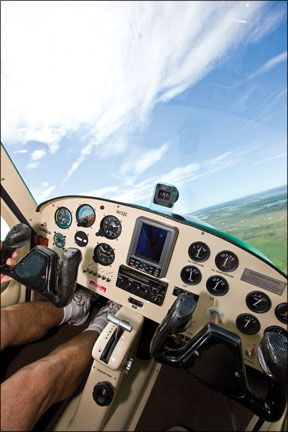uyers of light sport airplanes say they want cheap, basic models, but when the check is to be written, what they really buy are upscale airframes with glass panels and whatever creature comforts can be gotten into the airplane. Thats why the top LSA sellers arent the lowest priced models, but nearer the highest. The Paradise P1 fits this mold, more or less living up to what the companys sales manager, Chris Regis, calls the Lexus of LSAs. Hes not far off the mark, given the airplanes detailing, price point and the degree to which you can customize the panel. But we would make another comparison: Its a modern Cessna 150. we’ll get to why in a moment.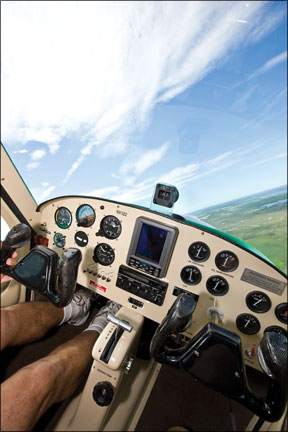
Brazilian Roots
Like the majority of current LSAs, the P1 is an import, but from south of the border, not Europe. The airplane emerges from Brazils lively aircraft market and was designed before the ASTM light sport rules were put in place. It was conceived originally intended as a small, inexpensive utility airplane for the Brazilian outback. It first flew in 1999 and more than 130 are flying in Brazil.
In the world of LSAs, this makes it an odd duck: It was originally designed with a maximum gross weight of 1650 pounds, so it theoretically has a useful load of about 800 pounds. Since the LSA limit is 1320 pounds, its real useful load is about the same as everything else, around 500 pounds, depending on equipment.
But at the higher weight in its original form, it has the weight and rough size of a Cessna 150. (The wingspan is 31 feet, compared to the 150s 33 feet and its about 3 feet shorter than the Cessna.) But the P1 kills the Cessna in overall performance, cruising at 110 to 115 knots and out climbing the 150 by a couple of hundred feet a minute. That puts it in the same league as many of the other LSAs-faster than some, slower than others. But what it gives up in speed, it makes up in range. The P1 sports a prodigious 38 gallons of gas capacity, giving it seven hours of endurance, depending on engine choice and power setting. Even if you don’t plan long cross countries in an LSA-and many owners don’t-this gives you the option of either tankering cheap fuel where you find it, or just not having
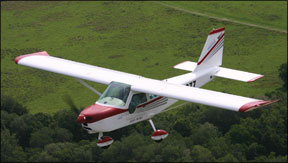
to worry about refueling after every couple of flights.
The P1 is equipped with integral metal wing tanks-one on each side, with a left/right/off valve-and its approved to burn E10 autogas in any of the Rotax engines available as options. These include the 80-HP 912, the 100-HP 912 ULS and the 115-HP 914. All of the engines have a three-blade Warp Drive composite prop, but a Kevlar/glass Kiev prop is an option.
Although the Rotax seems to be happy with E10, this fuel has obvious drawbacks. As we reported in the January 2011 issue of Aviation Consumer, the fuel is hydrophilic and owners who use it report that it can absorb moisture both during flight and in storage. To reduce the risk, either fly a lot or stick with 100LL.
Although the Rotax engines don’t like 100LL, they can operate on it without substantially raising maintenance costs. Operating on unleaded fuel, Rotax engines can run for 100 hours on a single oil change. With leaded fuel, the interval is cut in half.
Luxury Cabin
The P1s construction is reminiscent of the Symphony SA160, although its obviously smaller. Like the Symphony, the P1 is constructed of welded steel tubing skinned with composite from the cabin section rearward. The doors, wingtips and cowling are glass, but everything else is riveted aluminum.
To minimize vibration and noise, the skins on both are bonded with Sikaflex and riveted. The control system is conventional cables, with a manual and optional electric trim system operating a moveable tab. It also has adjustable rudder trim,
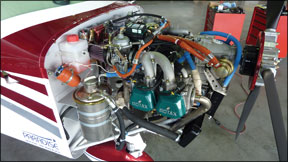
which is unusual for an LSA.
Rather than a stick, the airplane has a yoke, giving it a larger-airplane feel and representing a departure for the majority of LSAs, which have center sticks. The airplanes flaps can be either manual or electric, at the option of the customer. The manual flaps are controlled by a Johnson bar between the seats. The P1 also has another unique option: The airplane can be equipped from the factory with hand-only controls for operation by a paraplegic pilot. While thats obviously a niche market, its in keeping with Paradises philosophy to innovate and respond to customer requirements.
As for options, the P1 may have the most extensive list of add ons in the LSA field, especially with regard to avionics. There are four basic packages, ranging from a round-gauge panel all the way to a full-up a dual-display Dynon Skyview package. The base price is $117,312 while the dual-screen Dynon version is priced at $139,312.
Where the P1 distinguishes itself is in interior accommodations which are, by any standard, quite commodious. The seats are large and comfortable and, as with heavier airplanes, adjustable via sliding rails. Moreover, there’s a quick removal option that allows the seats to be popped out easily, without tools. This is a plus for any airplane used for utility purposes. The standard seats don’t recline, but there’s an option to add this capability.
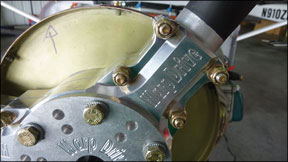
With sliding seats, there’s no contorting yourself to reach a rudder adjustment control or putting up with having your knees in your chest for lack of leg room. In the airplane we flew, the seats were nicely detailed in Brazilian leather, with three-point harnesses and headrests.
The interior detailing might be thought of as a modernized version of Cessnas mid-1970s motif. No, not Royalite, but molded plastic and carbon fiber parts that give the airplane a decidedly automotive (and quiet) feel. The panel is flat metal, finished in a customer-specified color. Side panels and a center console are molded plastic-also available in different colors.
The console even has a pair of cup holders, something usually overlooked in even top-end airplanes. There are generous sun visors, another detail many LSAs skip. LSAs tend to have generous baggage areas, although getting stuff into and out of them isn’t necessarily easy. The P1s baggage area is 30 cubic feet, with a stated capacity of 70 pounds. In the Brazilian version, the weight limit is 330 pounds. Its accessible by tilting the seats forward, giving what is average access for the class. With one seat removed, its possible to recline in the airplane and use it as a makeshift camper. A rear skylight provides enough light to find things in the very far reaches of the baggage compartment.
The cabin is we’ll ventilated, with both panel vents and cabin-window mounted

blast vents. Since Rotax engines are water cooled, the heater uses an automotive-style core with a blower, thus reducing if not entirely eliminating worries about carbon monoxide in the cabin.
Flying It
If we have any significant complaint about the P1, it would be getting into and out of it. The cabin itself is large enough, but its not very tall, meaning headroom is limited and due to structural considerations, there’s a top sill right below the lower surface of the wing. This means you have to duck down to squeeze yourself into the seats. Its not exactly painful, but doing it gracefully requires practice.
Once youre in, the headroom is adequate, but not generous. Although we were comfortable, those long of torso might scrape a headset band on the headliner from time to time.
Cockpit visibility is excellent forward and out the side windows, although its somewhat restricted by the door posts, requiring a little head craning to pick up the runway on the turn from base to final. This is the typical tradeoff between high-wing LSAs and low-wing designs, which generally have unrestricted bubble canopies. On the other hand, the bubbles have proven oven-like during the summer.
There’s nothing exceptional about the operation of the P1. Its typical Rotax. Turn
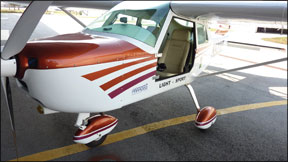
the key, start it up, warm it up and take off. However, the airplane is equipped with a pair of covered toggle switches for the ignition systems, rather than the traditional left/right key positions.
One pleasant surprise in flying the P1 is its handling. Because of their light weight and size, almost all of the LSAs weve flown have a less-than-pleasant twitchy feel, especially in pitch. For pilots used to heavier certified airplanes-thats most of us-these airplanes require accommodation. And in our view, the neutral or near-neutral stability some of them have may not meet ASTM standards.
In contrast, the P1 flies and feels like…a Cessna 150 or even a 172. Right at rotation, we noticed the pitch forces are just heavy enough to prevent over pitching, but not so heavy as to require a grunt to coax the thing off the runway. Many pilots who fly LSAs are surprised at how difficult they are to rotate smoothly, but the P1 is the exception. It also has what we could call conventional stability. If aggressively displaced in pitch, it oscillates two or three times and finds the trimmed airspeed, while a few LSAs weve flown simply hold the pitch while the airspeed decays.
Roll forces are on the light side, again, much like the Cessna 150. The airplane isn’t trim hungry, but rather than a trim wheel, it has a small T-lever mounted on the console between the two seats. This requires a little getting used to, because aircraft as light as the P1 require trim in small doses-a quarter turn on a trim wheel translates to a miniscule movement of a lever. We found nothing unusual in
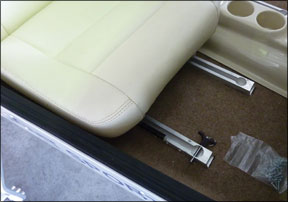
slow flight or stalls, so the airplane should be an excellent trainer.
Its also a respectable cruiser. On an empty weight of about 815 pounds, a single pilot could top the tanks and still have room for 70 pounds of baggage. That translates to six hours of endurance with a generous one-hour fuel reserve. In still air, thats about 650 miles of range. Not bad for an LSA. Cruise speeds are claimed as 110 knots at 75 percent power and thats about what we recorded, more or less, making the airplane suitable for modest cross-country flying.
Company Profile
The Paradise line was started in the late 1990s by Brazilian businessman Noe de Oliveira S. Filho, a self-taught aeronautical engineer. It remains privately owned and mostly self-financed, although Chris Regis told us the company will seek financing to expand its U.S. facilities.
Currently, the Brazilian factory has a nominal capacity of 120 aircraft a year, but because of labor shortages, its building half that number. The current downturn has definitely not hobbled Brazil. Brazils economy has been expanding at a red-hot 9 percent and only slowed to 6 percent in 2010.
According to Regis, this has resulted in a problem other manufacturers might like to have: The factory cant keep up with demand and is struggling to expand. As
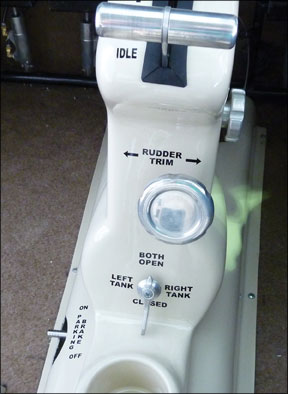
we go to press with this issue, Paradise is moving from its Sebring, Florida, location to larger quarters once occupied by Piper at Lakeland, Florida. Regis told us the company will likely expand that facility to include at least an assembly if not a fabrication factory.
When we visited Sebring, the company was assembling finished aircraft from parts fabricated in Brazil, but Regis said the Brazilian capacity isn’t sufficient to meet even domestic demand. Regis showed us a modest inventory of P1 parts, so we suspect the airplane would be well-supported. Also, Lockwood Aviation is widely known for its expert support of the Rotax line and its located at Sebring.
Conclusion
Like every other LSA out there, the P1 has to live or die in a veritable ocean of competition. At present, its a relative unknown and, according to Dan Johnsons LSA market reports, Paradise has only 15 sales in the U.S., representing less than 1 percent of the market as of late 2010.
Normally, that would cause us to be cautious of this airplane, but the fact that its coming out of a South American country with a booming economy suggests that the company might have staying power. Our impression is that its appropriately lean, but also properly stocked with support parts and infrastructure. That makes it worth watching and thats what we intend to do next time we do an LSA comparison report.

